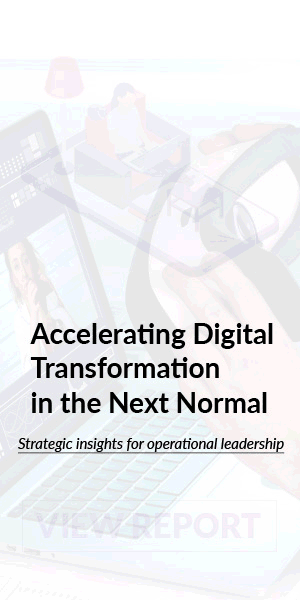Topics
How Businesses Create Value with Extended Reality

Businesses that invest in extended reality (XR) technologies like augmented reality (AR) and virtual reality (VR) are creating value by understanding which use cases to focus on and how to best get a return on their investment.
Especially in today’s tech ecosystem that has so many solutions to choose from, decision makers need to follow a clear value proposition when choosing to invest in a technology. Although many solutions are symbiotic—integrating XR with an analytics platform can create even more value than either individual solution could create alone, for instance—there’s always an opportunity cost to consider.
In this article, we’ll help you to make that calculation.
This is how leading enterprises create value with XR.
The most valuable XR use cases
When we conducted our 2023 Digital Maturity and Mixed Reality Trends survey, we asked technical and operational leaders to weigh in on XR by answering questions about their organization’s tech strategy.
We asked, “What are the most valuable use cases for XR, either currently active or as a potential investment?” The most common response was XR-assisted training, with 65% of respondents citing it as the killer use case. Remote assistance came in at 56%, while workflow instruction, which uses XR for step-by-step guidance, was chosen by 52%.
Looking at this picture holistically, we see that XR is most effective at streamlining tasks that are both visual and hands-on. Because the technology is experiential by nature, it bridges the gap between what a user would normally see on a screen and the physical task before them.
Another key point here is that all of these use cases reduce travel time and costs. 78% of surveyed leaders say that XR can help reduce travel at least 1-3 times per year, with 15% going so far as to say that it removes 10+ travel events annually.
By reducing travel, XR delivers high value with a low barrier to entry.
How to calculate ROI of XR investment
To determine the return on investment of spending on XR technology, we need to consider the many variables that are at play. These include:
- Number of users and/or devices
- Volume discounts
- Type of device
- Number of platform features
- Target use cases
- Integration needs (analytics, CRM, IoT, etc)
Let’s break this down a bit. To start, devices represent one of the largest upfront costs of an XR investment. However, unlike spending on desktop computers, cloud, or other tech that functions horizontally across the organization, XR can deliver value for a targeted group of users that can share devices. When using XR for training, for instance, a single VR headset can be reused for every training session.
Another way to reduce the cost associated with devices is to buy in volume or to select a device that comes at a lower price-point. That’s why it’s key to determine the use cases and platform features before buying in. Especially when running a pilot program, consider purchasing the least expensive hardware that’s still capable of getting the job done.
For organizations that want to explore the possibilities of XR with a low-risk entry point, Immersive Learning as a Service (ILaaS) from CGS provides guided immersive services that include the hardware, logistics expertise, and curriculum needed to get started with XR, scale fast and more accurately measure ROI.
On the other side of the equation, we need to look at the potential savings or value that the tech will deliver. To make this more concrete, let’s say that, in one year, a remote assistance solution helps a company to avoid three travel events for an onsite event, and each of those events would normally cost $1750.
If the smart glasses cost $2,000 and the XR platform costs $1,200, then our ROI is:
$5,250 - $2,000 - $1,200 = $2,050 ROI
When we add in the fact that the smart glasses are a nonrecurring CAPEX, this ROI will only grow in the years to come.
Understanding time to value of XR investment
In our survey, we asked “What is the expected time to see a return on investment for an XR implementation, from initial purchase”
We found that XR can pay off after a single use, such as remote assistance travel cost avoidance, but on average three to five uses is more likely. 25% said that two to three were necessary, while 36% required four to six uses. A minority of respondents, 18%, found that they needed to use the technology 11 or more times before they saw a positive ROI.
Overall, our survey found that expensive technology has more pressure to quickly deliver value, but the responses show a realistic view. On top of that, since users can share devices within the organization, time to value is quicker when compared to single user devices or broader horizontal infrastructure investment.
To calculate your own time to value, start by assessing the ROI as described above, and then determine how frequently the use case situation will arise. In our example of reducing travel by using AR for remote assistance, we need to figure out how often our employees have to travel to provide in-person assistance. Even in the scenario where time to value is greater than 10 uses, a company can still realize a substantial ROI in a timely manner if they are able to cut out just a few trips every month.
Another great thing about XR is that, unlike some other technologies, it’s not necessary to make a massive upfront investment before determining the exact ROI and time to value.
Organizations that start small and focus on a single use case for a select group of users can develop a proof of concept at a minimal cost. On top of that, flexible options like Immersive Learning as a Service can remove most of these upfront roadblocks so that decision makers can move forward with tangible metrics for ROI and time to value.
Conclusion
Businesses create value with XR by finding the right use case for them, by maximizing their ROI, and by developing a clear strategy around time to value. By starting with a pilot program, organizations remove uncertainty and reduce risk, enabling them to invest with confidence.
Want to learn more? This is only a fraction of the takeaways that we uncovered in our 2023 trends report. To get the full picture, view the entire report now.

